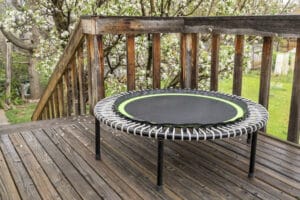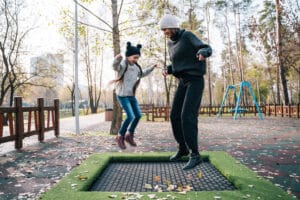Where is the Best Place to Put a Trampoline?
Key Takeaways
- The safest location for a trampoline is on an open grassy area, providing a soft landing surface.
- Ensure there is enough space around the trampoline with a minimum clearance of at least five feet on all sides to prevent collisions with surrounding objects or structures.
- Avoid placing the trampoline near obstacles such as trees, fences, power lines, pools, ponds, or steep drop-offs to minimize safety risks.
Trampolines can provide hours of fun and entertainment for both children and adults. However, it is crucial to carefully consider the placement of a trampoline to ensure the safety of those using it. In this article, we will explore the best location to put a trampoline based on expert recommendations and guidelines.
Safety Considerations
When deciding on the placement of a trampoline, safety should be the top priority. The following factors should be taken into account:
- Open Grass Area: The safest location for a trampoline is on an open grassy area. This provides a soft landing surface in case of falls.
- Clearance: Ensure there is enough space around the trampoline with a minimum clearance of at least five feet on all sides. This helps prevent collisions with surrounding objects or structures.
- Obstacles: Place the trampoline away from obstacles such as trees, fences, or power lines to avoid potential hazards.
- Hazards: Keep the trampoline away from pools, ponds, steep drop-offs, or any other objects or structures that could pose a safety risk.
- Overhead Clearance: Consider the overhead clearance as well, avoiding low-hanging branches or nearby power lines.
Recommended Location
Based on the information gathered, the ideal location for a trampoline is in an open grassy area with a soft landing surface, away from obstacles such as trees, fences, or power lines. It is important to ensure there is enough space around the trampoline, with a minimum clearance of at least five feet on all sides.
Additionally, the trampoline should be placed away from potential hazards such as pools, ponds, steep drop-offs, and other objects or structures that could pose a safety risk. Overhead clearance should also be considered, avoiding low-hanging branches or nearby power lines.
Landing Surface
While an open grassy area is the preferred location for a trampoline, other materials can also provide shock absorption. Wood chips, sand, rubber mulch, rubber pads, or pea gravel are viable alternatives that can help cushion falls and reduce the risk of injuries.
Manufacturer Guidelines
It is crucial to refer to the guidelines outlined in the trampoline’s owner’s manual for specific recommendations regarding the setup and placement of the trampoline. The manufacturer’s instructions will provide valuable insights and considerations based on the specific model.
Conclusion
When it comes to placing a trampoline, safety should always be the primary concern. An open grassy area with a soft landing surface, away from obstacles and potential hazards, is the best location. Adequate clearance and consideration of overhead structures are also important factors to ensure a safe trampolining experience.
Related Websites:
FAQs:
Q: What factors should I consider when choosing the location for my outdoor trampoline?
When choosing the location for your outdoor trampoline, it is important to consider factors such as space availability, overhead clearance, level ground, accessibility, and privacy and noise concerns. These factors ensure safety and maximize your enjoyment.
Q: How far should my trampoline be from potential hazards?
To ensure safety, it is important to keep your trampoline a safe distance away from hazards such as trees, fences, power lines, or swimming pools. This helps minimize the risk of accidents and injuries.
Q: How can I reduce noise when using a trampoline?
To reduce noise when using a trampoline, consider placing it on a soft surface or using noise-dampening materials. These measures help mitigate noise pollution and ensure a more peaceful experience for both you and your neighbors.
Q: What weather conditions should I consider when selecting the location for my trampoline?
When selecting the location for your trampoline, it is important to consider weather conditions such as excessive sun exposure, rain, or snow. These factors can affect the durability and longevity of your trampoline, so proper location selection can help mitigate potential damage.
Q: What maintenance requirements should I consider when choosing the location for my trampoline?
When choosing the location for your trampoline, it is important to consider maintenance requirements. Regular inspection and cleaning are necessary to ensure its longevity and safety. The location you choose can affect the ease of maintenance, so keep that in mind when making your decision.






